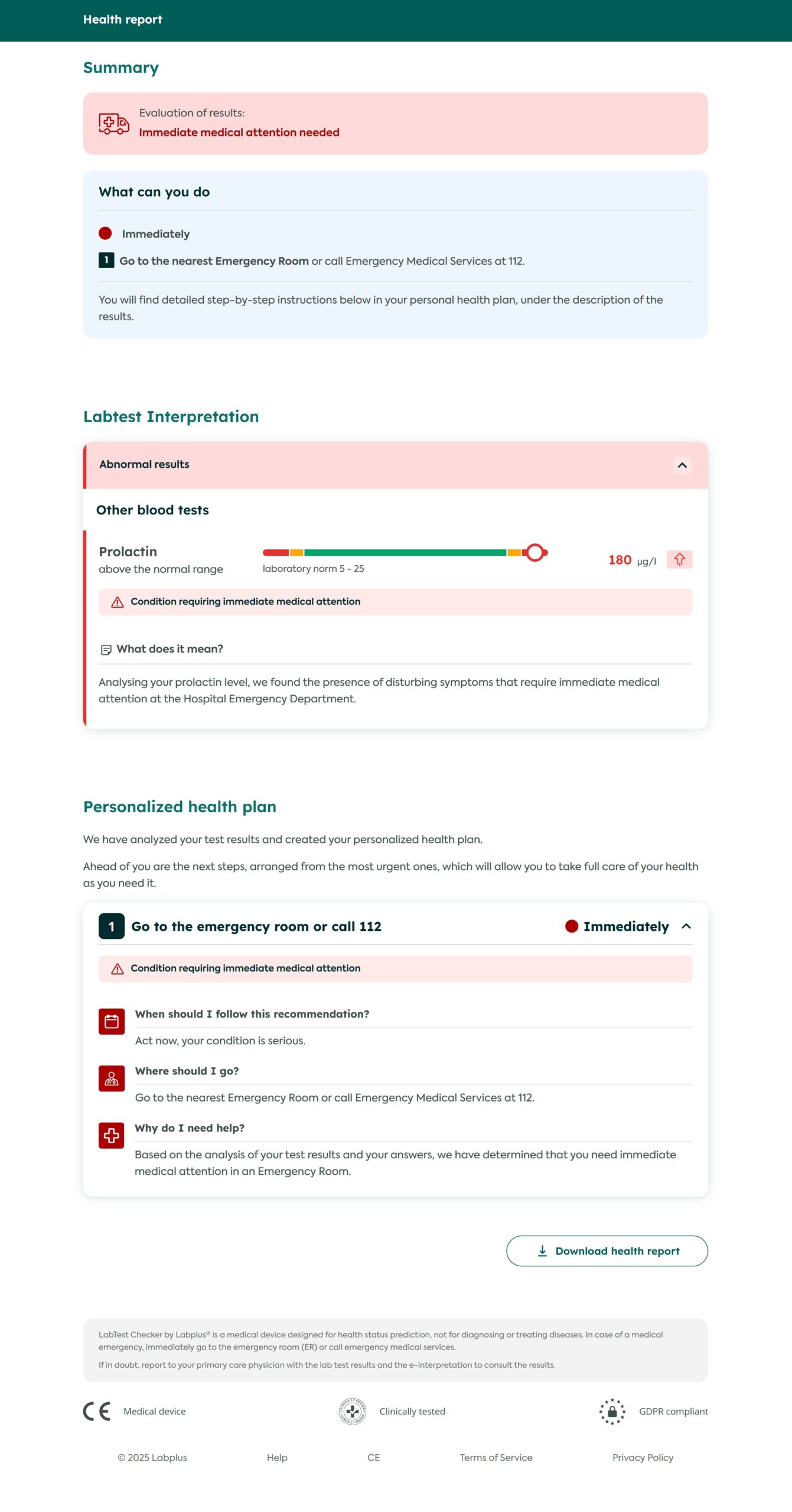Patient story
Immediate help for Joanna
Early intervention can be crucial to receive appropriate care.

Context
48-year-old Joanna had been experiencing some concerning symptoms lately – occasional headaches and what seemed like minor changes in her vision. During her routine gynecological appointment, her doctor recommended hormonal testing to investigate these issues.
When Joanna received her results, she noticed her prolactin levels were elevated. She wasn’t sure what this meant, but since she was leaving for a two-week vacation the next day, she figured she could address it with her doctor when she returned. After all, how urgent could it really be?
Fortunately, Joanna decided to get her results interpreted before her trip. What she discovered changed everything.
Expert commentary
Prolactin is a hormone produced by the anterior pituitary gland and is responsible for the functioning of the reproductive system. High levels of prolactin in the blood may indicate the presence of a pituitary tumor, accompanied by neurological symptoms such as headaches, dizziness, and visual disturbances.
In this case, considering the clinical symptoms and prolactin levels significantly exceeding the laboratory norm, it is necessary to first exclude a prolactinoma — a pituitary gland adenoma secreting prolactin.
Doctor of Medicine, graduate of Pomeranian Medical University in Szczecin, specialized in internal medicine. Works for the Lower Silesian Oncology Centre in Wroclaw, Poland.



